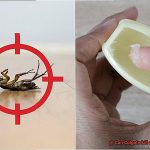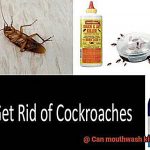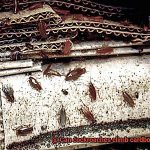Cockroaches, the ancient insects that have been around for over 300 million years, are renowned for their resilience and adaptability. They can survive in extreme conditions, which has led many to wonder if they live underground. It’s a fascinating question that has puzzled biologists and entomologists for years.
If you’re like most people, the mere thought of these creepy-crawly creatures can make your skin crawl. But did you know that there are over 4,000 species of cockroaches? Some are not only intriguing but also crucial insects in the ecosystem. However, the question remains: do all these roaches live underground?
In this blog post, we’ll delve into the various types of cockroaches and their habitats to answer the question: are cockroaches underground? We’ll take a deep dive into the captivating world of these infamous insects and uncover where they live and thrive. So whether you’re an enthusiastic bug lover or someone looking to conquer their fear of cockroaches, read on to discover some riveting facts about the subterranean world of these resilient creatures.
What Are Cockroaches?
Contents
Cockroaches are fascinating and intriguing insects that have been roaming the earth for millions of years. These creepy crawlies belong to the Blattodea order and boast over 4,500 species that have been identified worldwide. Cockroaches are known for their flattened bodies, long antennae, and six legs, which make them easily distinguishable from other insects.
Cockroaches come in all shapes and sizes, ranging from small to large and usually brown or black in color. They are highly adaptable creatures that can survive in various environments, including hot and cold temperatures, wet or dry conditions, and even in areas with little to no food. In fact, cockroaches are omnivores and will feast on anything from food scraps to glue and paper products.
Unfortunately, these resilient creatures are not just pesky; they can also be carriers of diseases and can contaminate food and surfaces with their droppings and saliva. And if you thought you could out-run a cockroach, think again. These speedy insects can cover up to three miles per hour, making them one of the fastest insects around. Plus, they have the ability to flatten their bodies and fit into narrow crevices, which makes them difficult to control or eliminate.
While many people assume that cockroaches only live underground or in dirty places, this is not always the case. In fact, some species prefer warm and humid environments such as those found in tropical regions, where they can be found living in soil, leaf litter, and other organic matter. However, many species are adapted to living in human-made structures such as homes and buildings.
Regardless of where they live, all cockroaches share certain characteristics that make them challenging to eradicate once they have taken up residence in a home or other structure. For instance, they can reproduce quickly and survive for extended periods without food or water. Additionally, they have a remarkable ability to adapt to changing conditions.
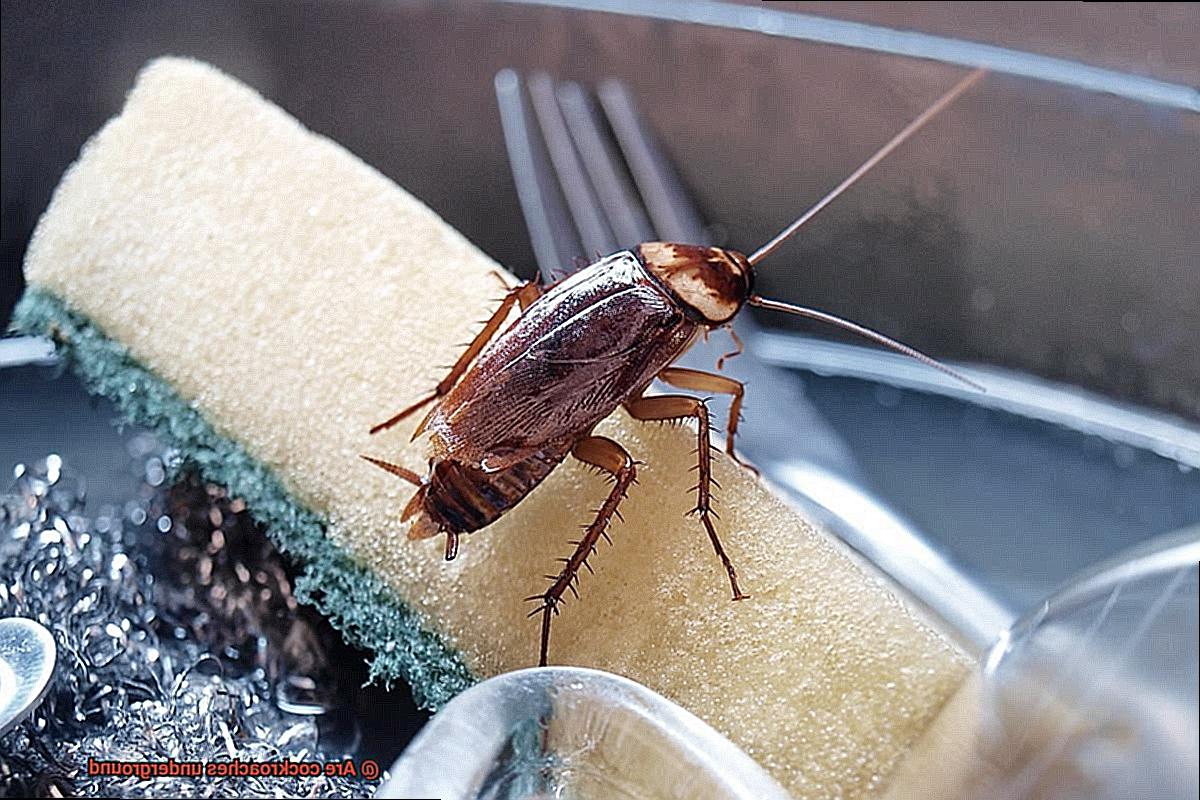
To prevent cockroach infestations, homeowners should take preventative measures such as sealing cracks and crevices, removing food sources, and keeping a clean living space. While it may be challenging to eliminate these pests once they have infested a home or building, professional pest control services can help to control the problem and prevent future infestations.
Do All Cockroaches Live Underground?
In fact, these resilient creatures are found in a variety of habitats, ranging from underground tunnels and sewers to trees and even water bodies.
With over 4,500 species of cockroaches worldwide, each has its own unique preference for a specific environment. For instance, the Oriental cockroach prefers dark and damp areas like basements or sewers, while the American cockroach can thrive in various habitats, including trees and bushes.
But just because a particular species of cockroach is known to live in a certain environment doesn’t mean it won’t move to another. Cockroaches are highly adaptable insects that can shift from one habitat to another depending on factors like food availability and temperature.

So, why is it crucial to know where cockroaches live? Identifying the species of cockroach you’re dealing with is essential for effective population control and preventing infestations in your home or building. Homeowners can take preventative measures such as sealing cracks and crevices, removing food sources, and keeping their living spaces clean to prevent infestations. And if you happen to spot a cockroach, identifying its species will help you take appropriate steps to control their population.
Species of Cockroaches That Live Underground
Cockroaches: the infamous resilient pests that can survive even underground. But did you know that there are specific species of cockroaches that call the underground home? In this article, we’ll explore the fascinating world of underground cockroaches, including the Oriental cockroach, Surinam cockroach, and American cockroach.
First up is the Oriental cockroach, also known as the water bug. These cockroaches are commonly found in sewers, basements, and other dark, damp environments. They’re larger than many other species of cockroaches and can grow up to one inch in length. With their shiny appearance and brown or black coloring, they’re difficult to miss.
Next is the Surinam cockroach, native to South America but now found in various parts of the world. Their preferred habitat is leaf litter, soil, and other moist environments. Unique to this species is their ability to produce sound by rubbing their wings together – a feature not seen in many other types of cockroaches.
Last but not least is the American cockroach, another common species that loves damp areas such as sewers and basements. These roaches are bigger than most, growing up to 1.5 inches in length. You can recognize them by their reddish-brown coloring and distinctive yellow marking on their thorax.
Unfortunately, all of these underground cockroach species are known for their resilience and difficulty to control once they infest a home or building. That’s why it’s crucial to take preventative measures such as sealing cracks and crevices in walls and floors, keeping food stored in airtight containers, and regularly cleaning up any food scraps or spills.
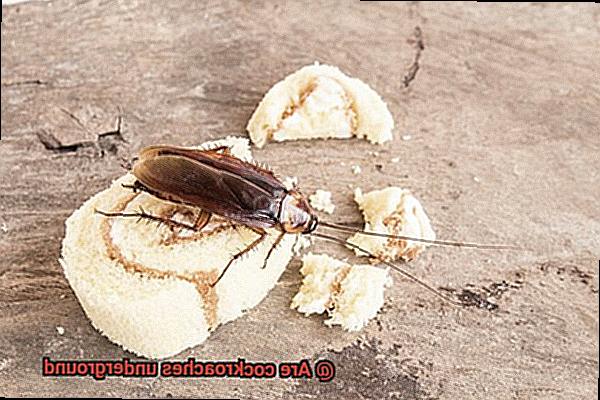
Species of Cockroaches That Don’t Live Underground
First on our list is the American cockroach, also known as the palmetto bug. These crafty critters love warm, humid areas like Florida and the Gulf Coast and are commonly found in buildings where they have access to food and water. From restaurants to grocery stores and even homes, American cockroaches can be found scuttling around in search of sustenance.
Next up is the oriental cockroach. Contrary to their name, these pests actually thrive in cooler climates and damp environments like basements, crawl spaces, and sewers. Known as “waterbugs,” oriental cockroaches can be found lurking in the shadows, waiting for their next meal.
The brown-banded cockroach is another species that doesn’t live underground. These pesky insects love to make themselves at home in warm buildings where they can easily access food sources like crumbs or pet food. From cabinets to closets and even appliances, brown-banded cockroaches can be found hiding out in all sorts of nooks and crannies.
Last but not least, we have the smokybrown cockroach. These urban dwellers prefer living above ground and can often be found buzzing around outdoor lights at night. They love to nest in trees, shrubs, and other vegetation but won’t hesitate to invade buildings if they can find food and water.
Adaptability of Cockroaches
These creatures are true survivors, and their adaptability is one of their most impressive traits. Cockroaches can survive in almost any environment and adapt quickly to changes in their surroundings. Let’s delve deeper into how they demonstrate their adaptability.
One of the most striking aspects of cockroach adaptability is their ability to live underground. They’re perfectly suited for dark and damp environments like sewer systems, basements, and tunnels. In these habitats, they can thrive and establish complex networks for themselves. Cockroaches are so well-adapted to underground living that they prefer it as an ideal place to breed and multiply.
Cockroaches are also known for their ability to burrow into the ground to escape extreme temperatures or harsh weather conditions. They can dig up to several centimeters deep into the soil and create intricate underground systems for themselves, allowing them to stay hidden from predators and continue to thrive in their new habitat.
Another way that cockroaches demonstrate adaptability is through their diet. They are omnivores, meaning they can consume almost anything, including plant matter, meat, and even other insects. This allows them to survive in a variety of environments where food sources may be scarce or limited.
Preventing and Controlling Infestations
Maintaining a healthy and clean environment is crucial, and preventing and controlling cockroach infestations is an essential aspect of achieving this. Although these pests prefer warm and humid environments, they are not typically found living underground. However, they may use underground tunnels or pipes as a means of transportation, making it important to seal any potential entry points that could allow them access to your space.
The most effective way to prevent and control cockroach infestations is through cleanliness and sanitation. Cockroaches are attracted to food sources, so it is crucial to keep all food tightly sealed and stored properly. Regular cleaning and removal of debris can also help eliminate potential hiding spots for these pests.
But what if an infestation occurs? Don’t worry; there are various methods for controlling and eliminating the problem. Bait stations, traps, and insecticides are all effective options. However, it is important to use these products as directed and seek professional help if the infestation persists.
Prevention is always better than cure, so make sure to take steps to prevent infestations before they occur. Regular cleaning and proper storage of food can go a long way in keeping cockroaches at bay. If you do encounter an infestation, take immediate action to control the problem before it becomes worse.
lkdLg0Nq4SQ” >
Conclusion
In conclusion, cockroaches are a remarkable species that have been around for millions of years. Although the question of whether they live underground is not straightforward, it’s clear that there are thousands of species worldwide, each with its unique preference for a specific environment.
Whether they prefer to live in human-made structures or warm and humid environments like soil and leaf litter, all cockroaches share certain characteristics that make them challenging to eradicate once they infest a home or other structure. They can reproduce quickly, survive for extended periods without food or water, and adapt to changing conditions.
To prevent cockroach infestations, homeowners should take preventative measures such as sealing cracks and crevices, removing food sources, and keeping a clean living space. If an infestation occurs, various methods can be used to control the problem effectively.



